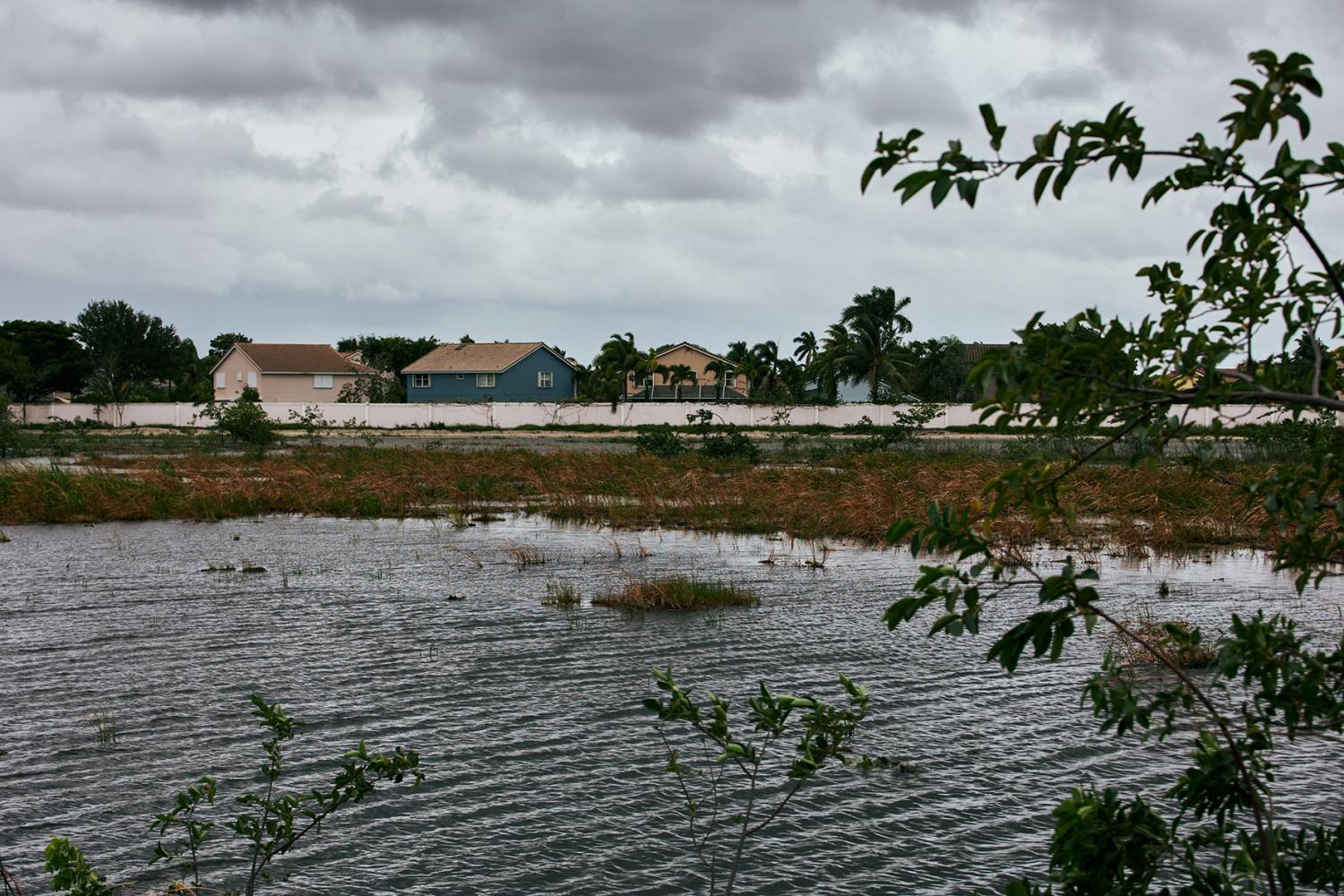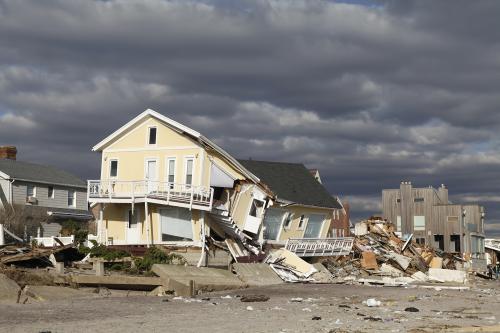Climate change and its related disasters have brought a new set of risks to homeowners, renters and the value of property—but also a chance for change. The multiple challenges posed by these disasters offer an opportunity to reevaluate our housing policy, especially concerning making traditional housing markets more effective and inclusive.
Among the many sectors and industries requiring climate solutions, stable and affordable housing is critical to developing disaster resilient communities. Despite the need to prepare for a climate-changed future, structural reform in the housing sector is an underused tool for helping communities develop ways to better endure disasters. This is particularly true in the many Black-majority neighborhoods that are more vulnerable to disaster impacts.
Housing issues often amplify the impacts of a disaster on Black communities
Black communities, which are often more vulnerable when floods, fires or disasters occur, often bear the brunt of climate impacts due, in no small part, to poor quality housing and community infrastructure. Yet, many of these same communities have limited control over local housing decisions, exacerbating their vulnerability.
These neighborhoods, often situated in historically devalued areas with poorer quality infrastructure in which homeowners have fewer resources to draw on, face unique challenges when disasters occur. As the damage from floods, storms, and wildfires becomes more severe, the economic security of homeowners in the most disaster-prone areas is threatened by rising insurance premiums in addition to damage to assets and a reduction in home equity, which all eat away at a family’s wealth. Homeowners in cities like Charleston, for example, are likely to face hefty costs to stay dry, such as the expense of raising foundations.
In the most at-risk areas, like low-lying coastal plains threatened by sea level rise, climate-related disasters are undermining the viability of entire neighborhoods. That impact is sometimes increased by city councils that are reluctant to invest in adaptations to the built environment — buildings, design codes and other human-made conditions — that could lower the threat posed by a disaster.
But housing quality can also indirectly amplify the impacts of disasters. Poorly insulated housing, for example, can increase the cost of heating and cooling during temperature extremes and raise healthcare costs when, for example, residents expose themselves to health risk to avoid a high AC bill.
Community-led solutions can help reduce impacts of disasters
Giving residents a voice in housing development processes and decisions can jump-start local efforts to mitigate the effect of climate disasters. Initiatives like Struggle for Miami’s Affordable and Sustainable Housing and the Jane Place Neighborhood Sustainability Initiative exemplify how community-driven approaches can bolster housing resilience and protect vulnerable populations. SMASH, located in Miami-Dade County, uses community land trusts to give residents an opportunity to have more control over their neighborhood. Recognizing that those who experience housing challenges are often best placed to lead the efforts to fix them, SMASH helps residents to weatherize their properties against climate extremes and works with property owners and local governments to stop evictions during disasters.
JPNSI, operating in some of the most disaster-prone areas of New Orleans, advocates for policy change to better protect renters’ rights after a disaster strikes. By building coalitions of local Black, Latino, women, youth, elderly residents— some of the most vulnerable groups across the city — JPNSI has succeeded in changing local regulations. These changes address two of the largest sources of insecurity before, during, and after climate-related disasters: a disproportionate number of short-term rentals and high rates of eviction.
What these initiatives share is the use of community-led action that, by addressing housing inequities, helps lessen a community’s vulnerability to disaster.
The urgency of addressing disaster-induced housing insecurity:
As temperatures rise, intensifying the frequency and severity of climate-related disasters, housing insecurity is likely to escalate the most for households and communities where housing is already precarious. From 2019 to 2023, there were 102 separate billion-dollar climate-related disasters, at an average cost of $122.5 billion per year. Disasters amplify displacement, highlighting the urgent need for proactive measures to safeguard housing stability.
In the most exposed places, like Miami-Dade County, Florida, climate-related displacement is one of the largest threats to Black communities. Census data indicates that roughly 3.1 million adults were displaced by disasters in 2022, 1 million of whom came from Florida, displaced by Hurricanes Ian and Nicole. In the Miami-Fort Lauderdale-Pompano Beach metro area, 39.6% of the displaced population was Black, far exceeding the proportion of Black residents in the area at 19%, and higher than the percentage of displaced Latino residents (37.8%) and white residents (18.8%).
Without structural reforms, disasters could exacerbate housing affordability issues, pricing residents out of ‘safer’ areas, and further marginalizing Black households. In high elevation neighborhoods, such as Little Haiti in Miami, where a luxury real estate development is already planned, residents fear that they will be pushed out. There is a growing concern that cities could see a new form of displacement, “climate gentrification.” The controversial term, used by some researchers, describes what occurs when residents of relatively wealthy communities, finding their higher valued neighborhoods becoming unlivable due to events such as sea-level rise, begin buying-up property viewed as less at-risk, driving up costs and pricing out the original residents.
These challenges demonstrate that structural reform in the housing sector is a linchpin to supporting residents of Black neighborhoods to strengthen their communities. By reframing housing as a vehicle for social equity, we can reduce the adverse impacts of climate-related disasters and empower marginalized communities.
Investing in community-led disaster resilience
By integrating housing reform into broader disaster preparedness strategies, we can build resilient neighborhoods from the ground up, ensuring the preservation of Black communities’ integrity and vitality. Initiatives like those led by SMASH and JPNSI, still nascent across most of the U.S., are demonstrating the potential of structural reforms in the housing sector to reduce vulnerability to disasters, protect communities from mounting costs and diminish the threat of disaster-related displacement.





